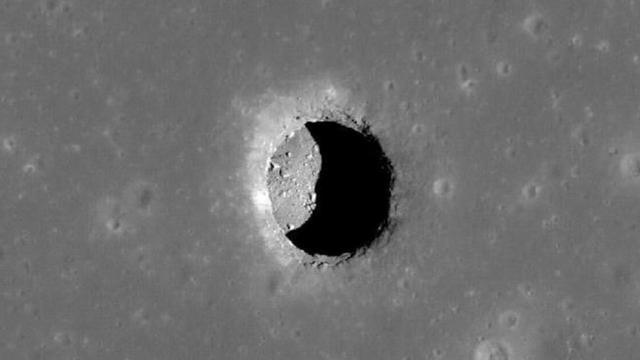
Image source, NASA
A scientist found a cave on the moon for the first time.
They said that the cave was at least 100 meters deep, which may be an ideal place for humans to build a permanent base.
Researchers said that this may only be one of the hundreds of caves hidden in the moon's "unlimited underground world".
At present, countries are competing to study a human permanent base on the moon, but they need to protect the astronauts from radiation, extreme temperature and space weather.
Helen Sharman, the first astronaut in Britain to travel to space. This newly discovered cave looks like a good place to establish a base, and said that humans may live after 20 to 30 years.In the potholes of the moon.
But she said that this cave is too deep, and astronauts may need to enter through the rope, and then use the "jet backpack or lifter" to come out.
Lorenzo Bruzzone and Leonardo Carrer of the University of Itiversity of Trento (Lorenzo Bruzzone) and Leonardo Carrer spanned the moon rock plains "Jinghai"A pothoral opening, thereby discovering this cave.
The naked eye here can be seen here, and it is also the landing area of "Apollo 11" (Apollo 11) in 1969.
The cave has a cave on the surface of the moon, leading to vertical hanging walls, and the tilt level that may extend to a deeper underground.
It was formed by millions of or even billions of years ago, and lava was formed when the moon surface flowed, and lava forms a tunnel in the rock.
Professor Carrell explained that the closest cave on the planet should be the volcanic cave on Lanzaarot Island, Spain.He added that researchers visited these caves for research.
"This is really exciting. When you have these discoveries and see these images, you realize that you are the first person to see it in human history." Professor Carrell said.

"After all, the life on the earth originated from the cave, so it is reasonable to live in the cave in the cave on the moon." Professor Carrell said.
This cave has not been fully explored, but the researchers hope to draw their maps with ductile radar, camera and even robots.
About 50 years ago, scientists first realized that there may be caves in the moon.In 2010, a camera on a spacecraft called "Lunar Reconnaissance Orbiter" was taken by a camera. Scientists thought these potholes may be the entrance to the cave.
But researchers do not know how deep these caves may be, nor do they have collapsed.
Now, the work of Professor Bruzine and Professor Carrell has answered this question, although there are still many jobs to do it to understand the overall size of the cave.
"We have a very clear moon watch image -resolution is as high as 25 cm -we can see the Apollo landing point -but we know nothing about the situation below the moon table. There is a huge opportunity to discover.
He said that this research may also help us explore the cave on Mars in the future.
This may open the door for us to find the evidence of Mars' life, because if life does exist, it is almost certain that it is located in a cave that is exempted from the natural factors of the surface of Mars.
The moon cave may be useful to humans, but scientists also emphasize that it may help answer basic questions about the history of the moon and even the solar system.
The rocks in the cave will not be damaged or eroded by space weather, so it can provide a large number of geological records of billions of years ago.
This study was published on the Nature Astronomy of Science.
Drawing: Gerry Fletcher



